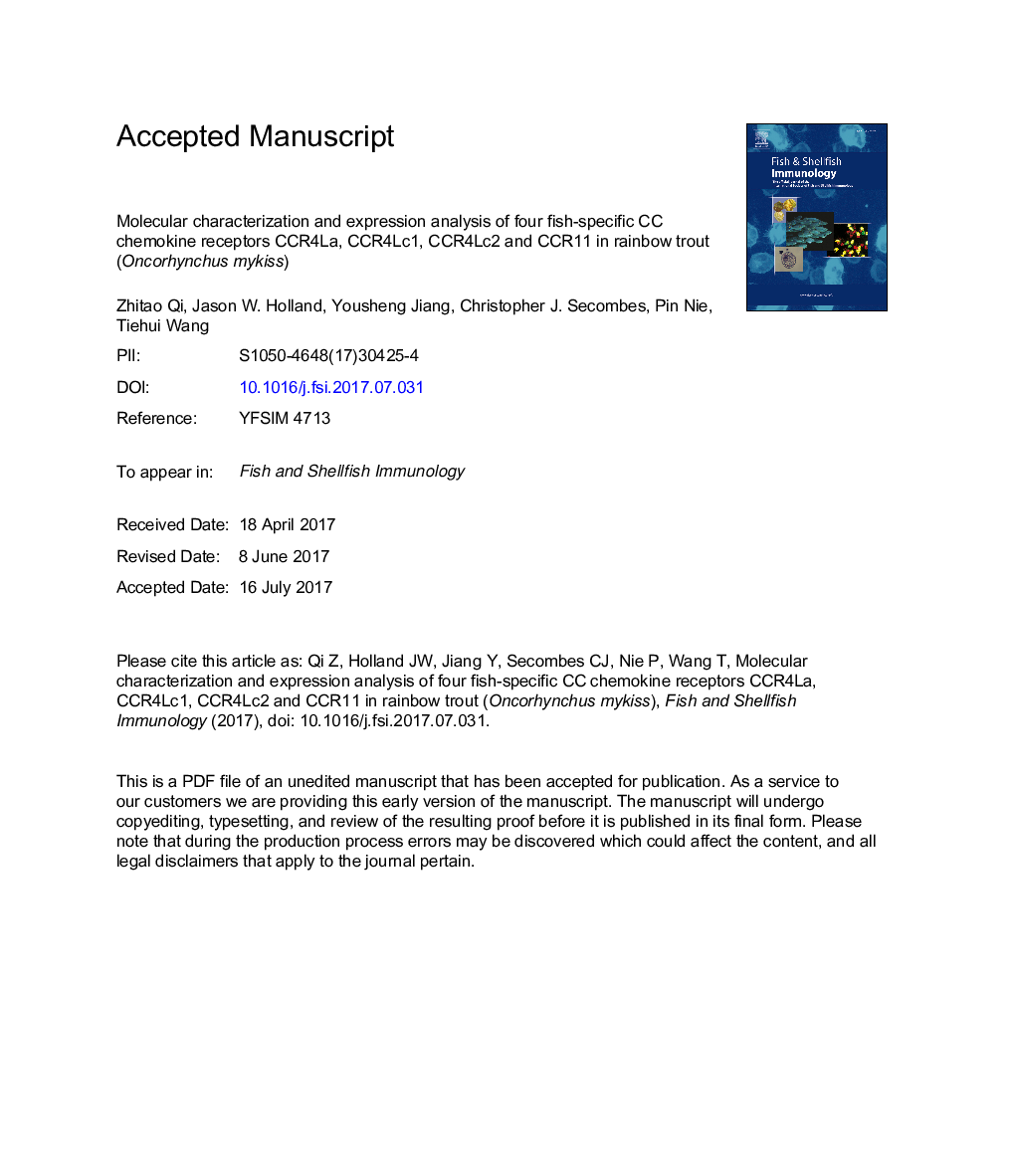| کد مقاله | کد نشریه | سال انتشار | مقاله انگلیسی | نسخه تمام متن |
|---|---|---|---|---|
| 5540410 | 1553606 | 2017 | 42 صفحه PDF | دانلود رایگان |
عنوان انگلیسی مقاله ISI
Molecular characterization and expression analysis of four fish-specific CC chemokine receptors CCR4La, CCR4Lc1, CCR4Lc2 and CCR11 in rainbow trout (Oncorhynchus mykiss)
دانلود مقاله + سفارش ترجمه
دانلود مقاله ISI انگلیسی
رایگان برای ایرانیان
کلمات کلیدی
موضوعات مرتبط
علوم زیستی و بیوفناوری
علوم کشاورزی و بیولوژیک
علوم آبزیان
پیش نمایش صفحه اول مقاله

چکیده انگلیسی
The chemokine and chemokine receptor networks regulate leukocyte trafficking, inflammation, immune cell differentiation, cancer and other biological processes. Comparative immunological studies have revealed that both chemokines and their receptors have expanded greatly in a species/lineage specific way. Of the 10 human CC chemokine receptors (CCR1-10) that bind CC chemokines, orthologues only to CCR6, 7, 9 and 10 are present in teleost fish. In this study, four fish-specific CCRs, termed as CCR4La, CCR4Lc1, CCR4Lc2 and CCR11, with a close link to human CCR1-5 and 8, in terms of amino acid homology and syntenic conservation, have been identified and characterized in rainbow trout (Oncorhynchus mykiss). These CCRs were found to possess the conserved features of the G protein-linked receptor family, including an extracellular N-terminal, seven TM domains, three extracellular loops and three intracellular loops, and a cytoplasmic carboxyl tail with multiple potential serine/threonine phosphorylation sites. Four cysteine residues known to be involved in forming two disulfide bonds are present in the extracellular domains and a DRY motif is present in the second intracellular loop. Signaling mediated by these receptors might be regulated by N-glycosylation, tyrosine sulfation, S-palmitoylation, a PDZ ligand motif and di-leucine motifs. Studies of intron/exon structure revealed distinct fish-specific CCR gene organization in different fish species/lineages that might contribute to the diversification of the chemokine ligand-receptor networks in different fish lineages. Fish-specific trout CCRs are highly expressed in immune tissues/organs, such as thymus, spleen, head kidney and gills. Their expression can be induced by the pro-inflammatory cytokines, IL-1β, IL-6 and IFNγ, by the pathogen associated molecular patterns, PolyIC and peptidoglycan, and by bacterial infection. These data suggest that fish-specific CCRs are likely to have an important role in immune regulation in fish.
ناشر
Database: Elsevier - ScienceDirect (ساینس دایرکت)
Journal: Fish & Shellfish Immunology - Volume 68, September 2017, Pages 411-427
Journal: Fish & Shellfish Immunology - Volume 68, September 2017, Pages 411-427
نویسندگان
Zhitao Qi, Jason W. Holland, Yousheng Jiang, Christopher J. Secombes, Pin Nie, Tiehui Wang,